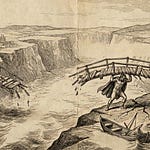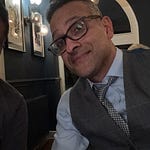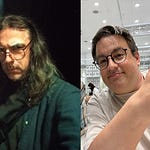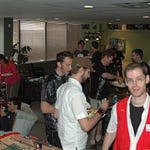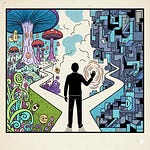Today’s episode also features the flash fiction story “Sullivan’s Choice”
My name is not Dave
Dave was born bawling. He didn't really like what he saw when he popped out into the light. "Rather depressing," he drawled. But there was nothing to do about it, so he sighed, shut up and set up shop in my head.
To date, that is the shortest “flash fiction” story I’ve ever written at exactly 42 words, not including the title.
Flash fiction is a sub-genre of the short story that can range from a few hundred or fewer words to maybe a thousand words. In other words, a really short short story! As with any story, it needs to have a progression: a beginning, a middle, and an end. Flash is a genre I knew nothing about until early 2024 when I randomly decided to get back into writing fiction. Since I needed something to force me forward, I found an online course at Oxford University entitled, “Flash Fiction Workshop,” with writer and teacher Gail Anderson. On a whim, I enrolled.
Over a twelve-week period, this group of students was courageous enough to present their creations to each other and receive live feedback. I won’t lie; the first time my story was discussed, I was terrified. I can write until the cows jump over the moon for the world wide web, but here were real, live people dissecting my work in front of me while I was muted. I suppose years of code reviews by my peers have helped, but this was on another level.
Writing flash stories is an art. If I had been asked how difficult it would be to write a piece of fictional literature under 1000 words, I might have said, “It can’t be that bad.” In reality, with less space to get your ideas across, each word becomes a ponderous weight on your lips. In such a situation, your mind can lazily wander into a “telling” mode where the reader is left unsatisfied and unchallenged. With 1000 words or less, can you craft a story with any wonder at the end? Does the story leap from the page into your subconscious long after you have read it because it made you think? Can you even get the reader to see the same things you do and get to the same conclusion?
The first story I wrote for the class was called “In the looking glass.” It centered on the perspective as seen from within a mirror stationed in the hallway at the entrance of an apartment, something I had thought was obvious. But it wasn’t. It was only obvious to me because I had imagined my current apartment, which has a mirrored closet at the end of the entrance hallway. Seeing my short short story through other people’s eyes was enlightening. One person even thought there was a video camera behind the glass; another could not understand why the person was putting on shoes in their bedroom. After all, that’s where they had their mirrors!
Every week we were given “prompts” and a specific word count with which we played for the following week. The prompts could be photos, audio clips, or random words, to name a few. For me, a haunting melody turned into a tragedy for twins; a prompt about a city turned into a story about a parrot; and a photo of an old storefront bearing the name C. Sullivan turned into a version of the devil come to visit, called “Sullivan’s Choice.”
If you are interested in starting up writing again, or for the first time, Gail’s course is one of the best I can recommend. I had forgotten the joy of putting pen to literal paper. I had forgotten the cathartic release of working through reality by writing fiction. A few of us loved the course so much that we have continued to meet almost monthly since the course ended. The “Chapter Chasers” writing group celebrated its first anniversary this past month. Through this year of telling stories to each other, the members have changed jobs, survived health scares, moved cities, and found refuge in our imaginations. We have yet to meet in person!
Because of Gail, her course, and my writing group, I do believe my writing has improved. I am now on the lookout for adverbs that don’t really advance the narrative in someone’s head, where the writing becomes lazy, making for a less engaging experience for the reader. I think with care about each word and sentence, making sure they work to drive home the story. I did take a longer, advanced writing course after the “Flash Fiction Workshop.” The advanced writing course gave me more tools to explore character, plot creation, and more, however, for me, receiving live feedback from my peers was the most fun.
Storytelling is unique to each individual: their style, their experiences, and their beliefs. Courses won’t teach you how to write but give you tools with which you can get your story into the mind of another effectively. As with any skill, the only way to improve is to practice every day and every week. Every day I walk through a myriad of stories: The veins on a leaf are the map to an ancient city; a shuffling man hunched over on the sidewalk, a tale of joy or sorrow untold; a melody unlocks the path to someone’s heart. Every day I am bursting to tell you a story. I do not know how you will understand it, I do not know if you will enjoy it, but I do know that I must try. Sometimes the stories are long, but oftentimes, you can accomplish in a few words what takes a novel, and that is the beauty of flash fiction.
Since April, I have published only one of the other stories that I wrote during the flash fiction course:
The following are flash fiction stories specifically written for this Substack








